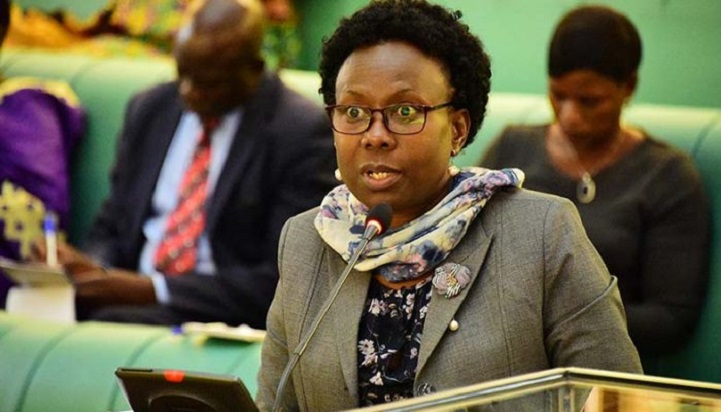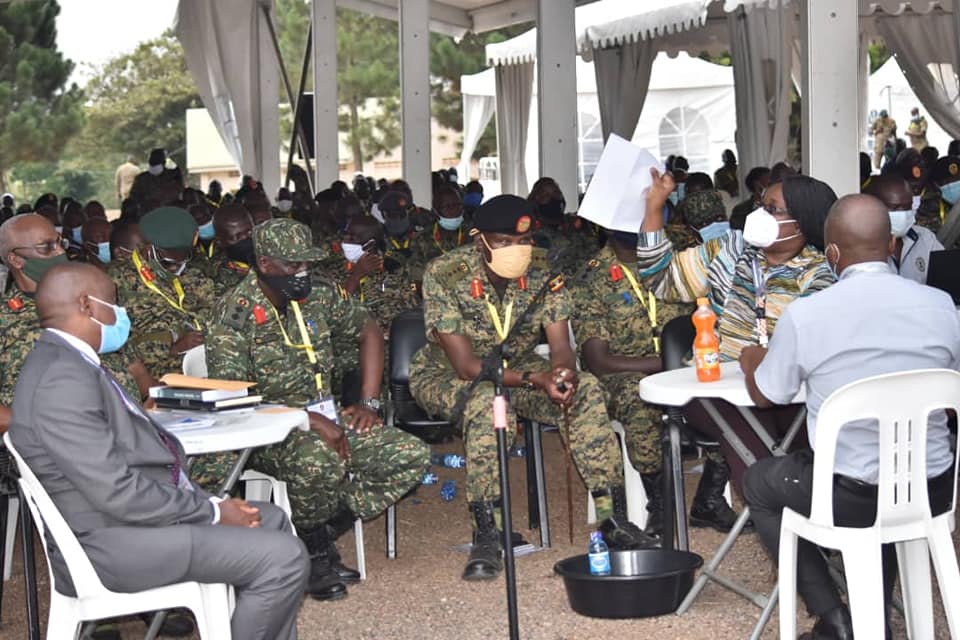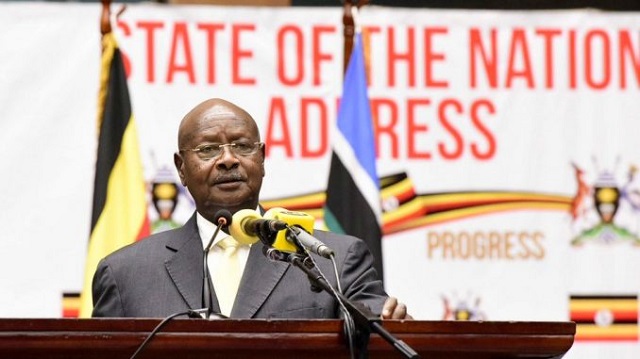The Parish Development Model (PDM), a government initiative heralded as a likely game changer in poverty eradication efforts has recorded a bad start raising speculation that it could equally be dead on arrival.
The Parish Development Model was officially launched by President Yoweri Museveni in February at a function held in Kibuku district. The initiative was one of the promises in the NRM manifesto 2021-2026 which Museveni promised to use to support those in the subsistence economy to join the money economy.
But almost three months into the new financial year, it is emerging that no money has been disbursed from the treasury to the intended beneficiaries. URN has also learned that apart from the frustration of the long wait, the initiative was rushed into implementation confusing the districts.
Mostly, the confusion was about the fate of the wealth creation programs that had existed before PDM and whether the government was recentralizing functions that are supposed to be performed by the local governments. This was worsened by reports that some district officials had embezzled PDM funds especially when the Finance Ministry insists that the funds are still intact in the treasury.
Leo Kakonge, a farmer from Bushenyi recently told a meeting held via zoom that almost every activity relating to the distribution of seeds, seedlings, and farm inputs has stalled awaiting the disbursement of the funds under the Parish Development model. According to Kakonge, while the PDM looks like a good program, it has almost suffocated other government programs.
“In the past, the government would give inputs to farmers in form of seedlings and many other products. So when PDM came distribution of tea seedling under NAADS stopped in Bushenyi,” Kakonge said and suggested that the government clarifies what the Parish Development Model does and what it doesn’t.
The government had budgeted 404.3 billion Shillings in the fiscal years 2021/2022 for the capitalization of the Parish Revolving Fund. Each parish should have received a uniform of 38.16 million Shillings.
Bushenyi District Chairperson Jaffer Basajabalaba says that while the district had a budget of 991 million Shillings in the last financial year, they managed to have just half of what had been budgeted. “So we ended up giving out 8.9 million Shillings per parish,” Basajabalaba said.
He adds that although Bushenyi has embraced PDM, he thinks that there are a lot of issues yet to be clarified by the Parish Development Model Secretariat. According to Basajabalaba, the coming of the PDM has created confusion about the institutional framework of local governments, especially about the role of the Parish Chief.
“A parish is an administrative unit; it doesn’t have the planning component, even they don’t do the budgeting. So when you look at the institutional framework about how they can plan and budget for those resources, even the legal framework is not catered for,” said Basajabalaba
He suggests that the sub-county division should have been the PDM arrangement because most of the work is done at the sub-county level. Basajabalaba also said there is unfairness in the allocation of the PDM money. “There are parishes in Bushenyi where we have only two villages and others are having 17, 12 and so on. If we have funds based on the population of the area, then it can be fair,” he urged
Districts like Bududa have also complained that not all Parishes received the PDM cash. Only 54 of the 154 parishes got the money. Bududa District Chairperson, Milton Kamoti recently told URN that they were forced to divide money meant for the 54 parishes to the 159 parishes and therefore each received less than it should have.
The Advocates Coalition for Development and Environment (ACODE), an independent public policy research and advocacy Think Tank recently released the findings of a study about PDM implementation. While the researchers observed that the PDM is an important strategy that seeks to provide affirmative action for the marginalized group in society, they observed some shortcomings.
Jonas Mbabazi, a Research Fellow and Project Manager for the Local Government Councils’ Scorecard Initiative at ACODE said there are shortcomings observed in conceptualization, SACCOs, budget allocation, and the readiness of stakeholders among others. According to Mbabazi, the Local Government Act did not envisage a parish or a ward with responsibilities that have been bestowed on them by the Parish Development model.
“Most of the responsibility has been shifted to the Parish Development Committees. Yet they are largely a voluntary administrative structure that has no planning and legislative powers, a distortion of the decentralization framework that was envisaged in National Development Plan III,” Mbabazi observed.
“We believe that if the PDCS are to play a critical role, we need to make sure that we provide the legal and institutional framework to support the PDCS to deliver” Mbabazi suggested.
Designers of the PDM intended to localise Vision 2O4O and the National Development Plan for effective measurement and management of development interventions as opposed to past wealth creation interventions. Mbabazi however, noted that NDP III had proposed strengthening sub-counties for enhancing social economic transformation but the PDM has shifted from sub-counties to parishes.
Local Government Minister Raphael Magyezi has previously defended the role of the Parish chief in PDM saying his/her roles are stipulated under section 69 of the Local Government Act.
According to the Minister, the law requires the Parish Chief to assist the Parish Council in planning, budgeting and budget implementation; supervision, monitoring, and implementation of policies. The law provides that the Parish Chief should be under the supervision of the Parish Council.
The harmonized Participatory Planning Guide for Parishes/Wards issued by the Ministry of Local Government in 2003 adopted the Parish Council as the default Parish Development Committee (PDC). The ACODE study also found that there are still structural issues affecting the PDM implementation more than a year since it was launched.
“Most of the districts and sub-counties do not have offices for the Parish Chiefs. They don’t anywhere to operate from or any point of contact that the communities can find them,” revealed Mbabazi
Apart from the lack of offices, and remuneration for members of the Parish Development Committees(PDC), Mbabazi said the study found that the messages from government officials don’t seem to tally.
“The technical officers are saying one thing, and the political officers are saying the other. This mismatch in messaging demonstrates a lack of coordination and a lack of consistent messages,” he said
Julius Mukunda, the Executive Director, Civil Society Budget. Advocacy Group. (CSBAG) notes that the PDM like any other government program was bound to face challenges.
The exception right now is these challenges. We seem to have known that they are coming but we never prepared for them. So should we drop PDM? I don’t think we should. I think we should continue supporting it and try to fix the plane while in the air,” Said Mugunda
“I think let is prepare local governments and communities. Let us not rush. We should have prepared communities about the use of money so that they don’t misuse the resources. We can spend the rest of this year preparing”
Is Parish Model Money Still in Treasury, Or Eaten?
There were reports in August indicating that officials from Kabale and Kitgum districts had been arrested for diverting or stealing PDM money, It was alleged that in Kitgum, local government officials misappropriated 526 million Shillings meant for PDM.
That has raised the fear that PDM money like NAADS, NUSAF, Northern Uganda Poverty Rehabilitation Program, Rural Farmers Scheme, Entandikwa, Uganda Women Entrepreneurship Programme (UWEP), Operation Wealth Creation (OWC), Youth Entrepreneurship Scheme (YES), Youth Livelihood Programme (YLP) and EMYOOGA is likely to suffer miscarriage due to corruption.
While there were arrests of local government officials in Kabale and Kitgum for allegedly stealing PDM money? Sources at the Ministry of Finance and the Ministry of Local Government told URN that it was unlikely that the stolen money was part of the funds appropriated this financial year. The sources indicate that a decision has been taken to send the money directly from the treasury to the recipient SACCO accounts.
Ministry of Finance Spokesperson Jim Mugunga could not confirm this but referred URN to the Ministry of Local government who he said was the implementing agency for PDM.
URN could not reach Local Government Minister Raphael Magezi for comment on whether the stolen money was part of that released this financial year. But a source at the Ministry that asked for anonymity said that it is unlikely that district officers have touched PDM money for this financial year.
According to the source, the money which landed officers in Kabale and Kitgum in trouble could have been released during the last financial year. Unlike this financial year, the government last year sent the PDM cash directly to the districts to cover administrative costs, the purchase of some tools and gadgets, and the Parish development fund.
State Minister for Finance, Amos Lugoloobi in August briefed Parliament about the status of the implementation of PDM and said that 3,914 SACCOS under the PDM did not benefit from the 17 million Shillings allocated to parishes across Uganda as a revolving fund in the Financial Year 2021/2022. Many of those that did not receive the cash had not been fully registered as SACCOS.
According to Lugolobi, 134.83 billion Shillings has been released in the first quarter of the Financial Year 2022/2023 for PDM activities, representing 11.81 per cent. Parliament appropriated 1.142 trillion Shillings for the PDM program in the Financial Year 2022/2023.
–URN





